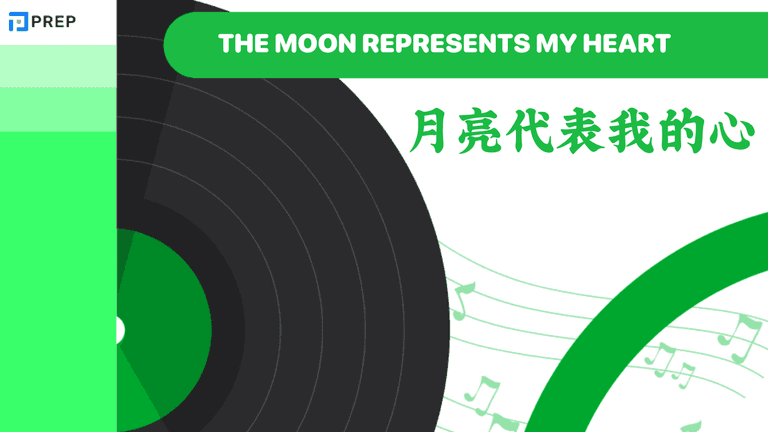A Pronunciation of Mandarin: A Complete Guide for Beginners
Learning the pronunciation of Mandarin can feel overwhelming at first, but with the right foundation and systematic approach, you can develop clear, confident speech that native speakers will understand and appreciate. This comprehensive guide breaks down the essential elements of Mandarin pronunciation into manageable steps, giving you the tools and knowledge needed to master this fundamental skill.
- I. Your First Step to Clear, Confident Mandarin
- II. Mastering the Four Essential Tones
- III. Consonant Sounds That Start Each Syllable
- IV. A Practical Method for Perfecting Your Accent
- V. Expanding Your Understanding: Frequently Asked Questions
- VI. Avoiding Common Pitfalls When Learn Chinese Pronunciation
- VII. Conclusion
I. Your First Step to Clear, Confident Mandarin
Before diving into vocabulary lists or grammar rules, establishing proper pronunciation habits will transform your entire Chinese learning experience. Think of pronunciation of mandarin as the foundation of a house – without it, everything else becomes unstable and unreliable.
Consider this simple example: the difference between mā (mother) and mǎ (horse) lies entirely in the tone you use. Get it wrong, and you might accidentally tell someone their horse is beautiful instead of their mother! This demonstrates why pronunciation isn't just important – it's absolutely critical for clear communication.
When you master the pronunciation of Mandarin from the beginning, you build speaking confidence naturally, prevent embarrassing misunderstandings, and make learning new vocabulary significantly easier since you'll know exactly how each word should sound.
II. Mastering the Four Essential Tones
Tones might seem foreign if English is your native language, but you already use tonal variations in everyday speech. When you say "Really?" as a question versus "Really!" in disbelief, you're changing the pitch to convey different meanings – this is exactly what pronunciation of Mandarin does systematically with every word.
Each of Mandarin's four tones has a distinct pitch pattern that you must master to speak clearly and be understood correctly.
-
First Tone (High-Flat) ˉ: This tone maintains a high, steady pitch throughout the entire syllable, like singing a single high note without wavering. The example mā (妈 - mother) demonstrates this flat, sustained pitch. To truly grasp this tone, search for "Mandarin First Tone audio" or use an online Pinyin dictionary to hear native speakers demonstrate this steady, high pitch.
-
Second Tone (Rising) ˊ: Starting from a mid-level pitch, this tone rises sharply upward, similar to how your voice goes up when asking "What?" in English. The word má (麻 - hemp/numb) exemplifies this rising pattern. Listen to native examples to hear how the pitch climbs from middle to high.
-
Third Tone (Falling-Rising) ˇ: This tone begins mid-level, dips down to the lowest pitch, then rises back up, creating a distinctive valley shape. The example mǎ (马 - horse) shows this complex pitch movement. Practice by imagining you're saying "Oh..." in a disappointed way, then perking up at the end.
-
Fourth Tone (Falling) ˋ: This tone starts high and drops sharply to the lowest pitch, like when you say "No!" firmly and decisively. The word mà (骂 - to scold) demonstrates this strong downward movement. The tone should sound definitive and complete.
- The "Fifth" Neutral Tone and The Golden Rule of Tone Changes: In pronunciation of mandarin, the neutral tone appears in unstressed syllables and sounds short, light, and quick – almost like a whispered afterthought. You'll encounter this frequently in everyday speech, particularly with particles and unstressed syllables in compound words.
III. Consonant Sounds That Start Each Syllable
Pinyin initials are the consonant sounds that begin syllables, and learning them systematically will give you the foundation for pronouncing any Chinese word correctly. In Chinese pronunciation, these consonants are organized into six distinct groups based on how your mouth produces each sound.
1. Bilabial and Labiodental Sounds (Two-Lip and Lip-Teeth Sounds)
|
Consonant |
Pronunciation of Mandarin Guide |
Example Words |
|
b |
Unaspirated sound similar to English "p" but without the puff of air. Press both lips together and release gently. |
不 (bù - no), 颁布 (bān bù - to announce) |
|
p |
An aspirated sound similar to English "p" with a strong puff of air. Press both lips together and release with force. |
批评 (pī píng - to criticize), 偏旁 (piān páng - radical) |
|
m |
Similar to English "m". Close both lips and let sound flow through the nasal cavity with vocal cord vibration. |
美妙 (měi miào - wonderful), 门面 (mén miàn - facade) |
|
f |
Similar to English "f". Upper teeth touch lower lip, no vocal cord vibration. |
丰富 (fēng fù - abundant), 芬芳 (fēn fāng - fragrant) |
2. Tip-of-Tongue Sounds
|
Consonant |
Pronunciation of Mandarin Guide |
Example Words |
|
d |
Unaspirated sound similar to English "t" but softer. Tongue tip touches upper teeth without air puff. |
电灯 (diàn dēng - electric light), 当代 (dāng dài - contemporary) |
|
t |
An aspirated sound similar to English "th" with strong air flow. Tongue tip touches upper teeth with air puff. |
淘汰 (táo tài - to eliminate), 体贴 (tǐ tiē - considerate) |
|
n |
Similar to English "n". Tongue tip touches upper teeth, vocal cords vibrate, air flows through nose. |
奶牛 (nǎi niú - dairy cow), 能耐 (néng nài - ability) |
|
l |
Similar to English "l". Tongue tip touches upper teeth, vocal cords vibrate, air flows around tongue sides. |
浏览 (liú lǎn - to browse), 林立 (lín lì - standing in great numbers) |
3. Back-of-Tongue Sounds
|
Consonant |
Pronunciation of Mandarin Guide |
Example Words |
|
g |
Unaspirated sound similar to English hard "g" but softer. The back of the tongue touches a soft palate without air puff. |
改革 (gǎi gé - reform), 故宫 (gù gōng - Forbidden City) |
|
k |
An aspirated sound similar to English "k" with strong air flow. The back of the tongue touches a soft palate with an air puff. |
慷慨 (kāng kǎi - generous), 开垦 (kāi kěn - to reclaim land) |
|
h |
Fricative sound similar to English "h" but stronger. The back of the tongue near the soft palate creates friction. |
刻苦 (kè kǔ - hardworking), 欢迎 (huān yíng - welcome) |
4. Blade-of-Tongue Sounds
|
Consonant |
Pronunciation of Mandarin Guide |
Example Words |
|
j |
Unaspirated sound similar to English "j" but more precise. The tongue blade touches the hard palate. |
经济 (jīng jì - economy), 家具 (jiā jù - furniture) |
|
q |
Aspirated version of "j" with strong air flow. Tongue blade touches hard palate with air puff. |
恰巧 (qià qiǎo - coincidentally), 亲切 (qīn qiè - kind) |
|
x |
Fricative sounds are unique to Chinese. Tongue blade near hard palate, mouth slightly stretched. |
学习 (xué xí - to study), 相信 (xiāng xìn - to believe) |
5. Front-of-Tongue Sounds
|
Consonant |
Pronunciation of Mandarin Guide |
Example Words |
|
z |
Unaspirated sound between English "ds" and "z". Tongue tip behind upper teeth, no air puff. |
总则 (zǒng zé - general rules), 粽子 (zòng zi - rice dumpling) |
|
c |
Aspirated version of "z" with strong air flow. Tongue tip behind upper teeth with air puff. |
措辞 (cuò cí - wording), 层次 (céng cì - level) |
|
s |
Similar to English "s" but crisper. Tongue tip near upper teeth creates friction. |
色素 (sè sù - pigment), 洒扫 (sǎ sǎo - to sweep) |
|
r |
Unique retroflex sound. Tongue tip curled back slightly, similar to American "r" but softer. |
仍然 (réng rán - still), 软弱 (ruǎn ruò - weak) |
6. Back-of-Tongue Sounds (Retroflex)
|
Consonant |
Pronunciation of Mandarin Guide |
Example Words |
|
zh |
Unaspirated retroflex sound. Tongue tip curled back, similar to "tr" but with curled tongue. |
正直 (zhèng zhí - upright), 周转 (zhōu zhuǎn - to circulate) |
|
ch |
Aspirated retroflex sound. Tongue tip curled back with strong air flow. |
长城 (cháng chéng - Great Wall), 抽查 (chōu chá - spot check) |
|
sh |
Retroflex fricative sound. Tongue tip curled back, similar to English "sh" but with curled tongue. |
手术 (shǒu shù - surgery), 舒适 (shū shì - comfortable) |
The systematic organization of these sounds helps you understand the logical patterns in Chinese alphabet pronunciation rather than memorizing each sound randomly.
The Vowel-Ending Foundation
Finals form the vowel-ending portion of each syllable and determine much of the syllable's character and flow. The basic finals a, o, e, i, u provide the foundation for more complex combinations.
The single most challenging vowel for English speakers is ü, which requires a specific technique:
-
say a long "eeee" sound
-
round your lips into an "oo" shape without moving your tongue position.
-> This creates the distinctive ü sound found in words like nǚ (woman) and lǚ (green). Practice this transition repeatedly until it becomes natural.
IV. A Practical Method for Perfecting Your Accent
1. Train Your Ears with Minimal Pair Drills to Hear the Difference
Before you can produce correct sounds in the pronunciation of mandarin, your ears must learn to distinguish between similar Chinese sounds that don't exist in English.
-
Minimal pair drills involve practicing with words that differ by only one sound element, such as shì (is) versus sì (four), or jī (chicken) versus zhī (to know).
-
Find audio examples of these minimal pairs using a Pinyin dictionary or language learning app, then listen repeatedly while focusing on the subtle differences between each pair.
-
This ear training forms the foundation for accurate pronunciation because you cannot produce sounds you cannot accurately perceive.
2. Self-Correct with the Record-and-Compare Technique
Transform your smartphone into a powerful pronunciation coach using this proven method.
-
First, find a clear audio example of the word or sound you want to practice from a reliable source like a Pinyin dictionary or language app.
-
Listen to it several times, then record yourself saying the same word using your phone's voice recorder.
-
Play both recordings back-to-back, focusing on differences in pitch contour for tones and sound quality for consonants and vowels.
This comparison method allows you to objectively identify specific areas that need improvement and track your pronunciation of mandarin progress over time. Repeat this process until your recording closely matches the native speaker model.
3. Find a Feedback Loop for Rapid, Lasting Improvement
While self-study provides an excellent foundation, objective feedback from others accelerates your progress and helps identify blind spots in your pronunciation of mandarin. Language exchange apps like HelloTalk connect you with native Chinese speakers who want to learn English, creating mutually beneficial practice opportunities.
Consider investing in occasional sessions to learn Chinese pronunciation with an affordable online tutor through platforms like iTalki, where you can receive professional feedback and correction. Even asking a Chinese-speaking friend or colleague to listen and provide gentle corrections can dramatically improve your accuracy and confidence.
V. Expanding Your Understanding: Frequently Asked Questions
1. What is the difference between Pinyin and actual Chinese characters?
Pinyin serves as a romanization system designed specifically to teach pronunciation of mandarin using familiar Latin letters, while Chinese characters represent the visual writing system that conveys meaning directly. Think of Pinyin as your pronunciation guide and characters as the actual written language – both are essential but serve completely different purposes in your Chinese learning journey.
2. Is it truly necessary to learn tones to be understood?
Absolutely, yes. Tones are not optional decorations but integral parts of each word's identity. Consider mǎi (买 - to buy) versus mài (卖 - to sell) – these represent opposite actions that differ only in tone. Neglecting tones doesn't just affect clarity; it fundamentally changes the meaning of what you're trying to communicate.
3. How does Chinese pronunciation compare in difficulty to Japanese or Korean?
Pronunciation of mandarin actually uses fewer unique consonant and vowel sounds than many languages, making the individual sounds relatively manageable for English speakers. However, the tonal system presents a unique challenge since English doesn't use pitch to distinguish word meanings. Japanese uses pitch accent but has simpler consonant-vowel combinations, while Korean features complex consonant aspiration rules but no tones. Each language presents distinct pronunciation challenges, but Mandarin's systematic tone patterns make it highly learnable with focused practice.
VI. Avoiding Common Pitfalls When Learn Chinese Pronunciation
Learning to recognize and avoid these common mistakes will accelerate your progress and prevent the development of persistent bad habits that become difficult to correct later.
-
Ignoring Tones and Believing "Close Enough" is Good Enough. Many beginners focus solely on consonants and vowels while treating tones as secondary. This approach leads to incomprehensible speech because tones carry as much meaning as the sounds themselves. Every syllable requires its correct tone – there are no exceptions.
-
Applying English Letter Sounds Directly to Pinyin. Pinyin uses familiar letters but often represents completely different sounds. For example, pronouncing 'q' like English "kw" instead of the correct aspirated "ch" sound creates immediate confusion. Always learn Pinyin as its own system rather than assuming English pronunciation rules apply.
-
Focusing Only on Speaking and Neglecting Active Listening. Many learners rush to speak without developing their listening skills first. However, you cannot produce sounds accurately until your ears can distinguish them clearly. Prioritize extensive listening practice using native speaker audio before expecting perfect pronunciation of mandarin from yourself.
Pronunciation represents a physical skill that develops gradually through consistent, intelligent practice. With the systematic approach, practical techniques, and comprehensive understanding provided in this guide, you possess all the tools necessary for mastering Mandarin pronunciation and building the foundation for confident, clear communication in Chinese.
VII. Conclusion
Mastering the pronunciation of Mandarin requires patience and systematic practice, but it's absolutely achievable for dedicated learners. By understanding tones, decoding Pinyin accurately, and implementing these practical training methods, you're building the foundation for confident Chinese communication. Continue practicing with authentic materials and native speakers – with consistent effort, basic Chinese words and pronunciation will become second nature.

Hi I'm Chloe, and I am currently serving as an Product Content Administrator at Prep Education. With over five years of experience in independent online IELTS study and exam preparation, I am confident in my ability to support learners in achieving their highest possible scores.
Comment
Premium content
View allPersonalized roadmap
Most read












